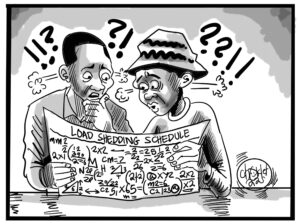Zambia is now one of the most unequal countries in the world; with 10 per cent of citizens receiving 52 per cent of all income, while the bottom 60 per cent gets just 12 per cent says Brenthurst Foundation head Greg Mills.
And Mills says in a bereft of ideas, the government has reverted to populist methods of “squeezing investors”.
In his analysis titled ‘Zambia’s mining investor schizophrenia’ published by South Africa’s Daily Maverick on March 2, 2017, Mills observed that economic growth had drastically fallen in the past two years.
“Zambia was a poster child for the Africa rising era in the 2000s, when its economy grew at 7% annually. Three externally driven changes made the boom times possible: surging commodity prices fuelled by China’s burgeoning appetite, an increase in aid coupled with debt relief, and the ability to fund governments through new bond issues. We know now, in today’s more difficult times, that across Africa this growth had little to do with better governance or, for that matter, governments’ development vision, focus and actions. In Zambia, when Chinese interest slackened and the copper price went down, economic growth slowed, the effects worsened by inconsistent tax policy and a spendthrift government. Growth fell to just 2.9% by 2015, and 3.6% last year, barely enough to maintain current per capita incomes and wholly inadequate to generate the employment required, especially by the large number of young people looking for jobs,” Mills stated.
Mills stated that a debt servicing crisis was around the corner.

“Debt, from which Zambia was all but totally relieved in 2006, now stands at just under $10-billion, or half of gross domestic product. Much of the new debt taken out under the Patriotic Front government (which took over in 2011), more than $3-billion in just four years, has been spent on civil service salary increases. The public service numbers 237,000 of the 625,000 people in formal employment, and consumes more than half the government budget. Public service salaries have increased by nearly 60% in real terms under the PF government, now led by Edgar Lungu,” Mills said.
“The cost of debt servicing is estimated at 17% of the budget (or 3% of GDP) in 2016, or $850-million. There is a larger crisis just around the corner: some $750-million of debt matures in 2022, $1-billion in 2024, and $1.25-billion between 2025 and 2027.”
He stated that Zambia had become one of the most unequal countries.

“Despite the claims of those who said that growth was the result of better governance, the problem now is precisely that it wasn’t. To the contrary, Zambia has become among the most unequal countries worldwide as the proceeds of growth were redistributed among the Lusaka-based elite. Today the top 10% of Zambians receive 52% of all income, while the bottom 60% of the 16-million population gets just 12%,” Mills stated.
And Mills stated that the Zambian government was squeezing investors.
“Bereft of ideas, rather than take difficult political steps the government has sidestepped its responsibility in reverting to tried and trusted populist methods of squeezing foreign investors, behaving less like a poster-child than a predator. Much of the country’s recent boom has been based on the fresh investment made in the country’s mines after privatisation. But Lusaka only agreed to sell its crown jewels when there was absolutely no other alternative,” he stated.
“Even so, judging from their actions, successive Zambian governments apparently prefer to see the mining industry as crooks conniving to undercut the state and rip off Zambians. First Quantum and ZCCM-IH have invested over $2.5-billion in Kansanshi. There have been a number of years when Kansanshi, alone, has been responsible for as much as 90% of Zambia’s corporate income tax, totalling to date $3.7-billion. It has also invested close to $200-million in CSR and education projects. Wage and electricity payments have injected another $50-million monthly into the Zambian economy from mines that did not exist in 2000.”
He stated that it would be hard for Zambia to attract other investors.
“In return, following the abrogation by the previous Zambian government of the original, more investor-friendly development agreements in 2008, First Quantum has received a grand total of 80% of Kansanshi’s declared dividends amounting to $800-million (ZCCM-IH receiving $200-million), a long way from paying back the investment. Still, with its $800-million and backed by further loans, First Quantum has built Sentinel at a cost of $2.3-billion, which will add another 300,000 tonnes of copper and more than 4,000 jobs to Kansanshi’s 270,000 tonnes and 8,000 jobs. Now ZCCM-IH has instituted a legal action against First Quantum (and is threatening similar action against others) over the extent of interest payable on retained earnings at Kansanshi, despite these being ploughed back into the mine and its associated smelter, stated Mills.

“Given Kansanshi’s earnings it’s hard to see that any better investment opportunity ever existed in Zambia. It’s hardly an action to encourage First Quantum’s directors to travel to Zambia, let alone attract other, serious investors who always look to see the way in which those already present are treated. While the Zambian government is desperate for cash to keep itself afloat, and this may be little more than a negotiating ploy, treating your most important investor this way risks a lot of hurt. How painful this will be depends on Lusaka’s next move. Lacking fresh development thoughts, it has nowhere to go. This has led it to tap existing sources such as First Quantum, rather than sign on to an IMF programme, trim government, make savings and grow the economic base, investment and jobs.”
To read the full analysis, click here.


















